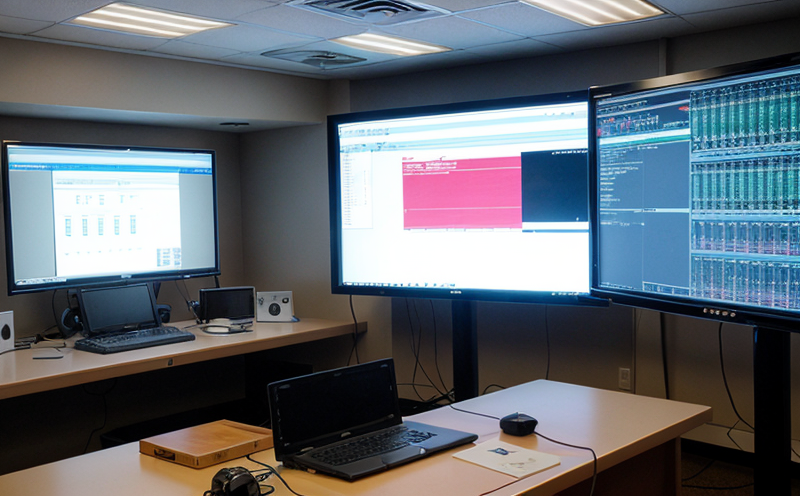UIC 612 Interoperability Testing of Signaling Equipment
The UIC 612 standard is a crucial benchmark in railway and transportation testing, ensuring that signaling equipment from different manufacturers can operate seamlessly across various railway networks. This interoperability is essential for enhancing the efficiency and reliability of rail operations.
Interoperability testing ensures that signaling systems not only work within their own network but also communicate effectively with other systems on interconnected tracks. The UIC 612 standard specifies a series of tests designed to evaluate how different signaling devices perform under various conditions, including communication protocols and error handling.
The UIC, or Union Internationale des Chemins de Fer, is an international association representing railway companies from around the world. Their standards are widely recognized for their ability to promote safety and efficiency in rail transport systems globally. By adhering to these standards, railways can ensure that their signaling equipment meets the highest global quality benchmarks.
The testing process involves simulating real-world scenarios where different types of signaling devices interact with one another. This includes testing the compatibility of signal lights, track circuits, and other critical components used in railway operations. The goal is to identify any potential issues that could lead to system failures or safety hazards.
During the test, various parameters are monitored closely. These include communication protocols such as GSM-R (Groupe Speciale Mobile-Radio), which facilitates secure voice and data communications between train operators and control centers. Other important metrics include latency, reliability, and error rates during data transmission.
The testing process also involves rigorous preparation of the signaling equipment to be tested. This includes ensuring that all components are functioning correctly before they undergo any stress tests. Once prepared, these devices are connected to a network designed specifically for interoperability testing purposes.
Interoperability testing helps railway operators make informed decisions about which signaling systems to purchase and install on their tracks. By using this standard, railways can ensure that their investments in new technologies will integrate smoothly with existing infrastructure, reducing the risk of costly disruptions during upgrades or expansions.
In summary, UIC 612 interoperability testing is vital for maintaining high levels of safety and efficiency within railway networks worldwide. It provides a framework for evaluating how different signaling systems interact with one another under realistic operating conditions. This ensures that railways can continue to operate safely even as they modernize their facilities.
- Ensures seamless communication between different signaling devices.
- Aids in identifying potential issues that could lead to system failures or safety hazards.
- Simplifies the integration of new technologies into existing railway networks.
- Facilitates compliance with international standards and regulations.
Applied Standards
The UIC 612 standard is closely aligned with other international standards such as ISO, EN, ASTM, and IEC. These standards form the backbone of railway signaling systems worldwide, ensuring consistency and compatibility across different networks.
ISO (International Organization for Standardization) provides a broad framework that includes guidelines on how to design, implement, test, and maintain interoperable signaling equipment. The EN (European Norms) series is particularly relevant within the European Union, providing detailed specifications that align closely with UIC 612.
ASTM International focuses more on material science and engineering practices but also contributes significantly to railway safety through its standards related to metals used in track construction. Lastly, IEC (International Electrotechnical Commission) deals primarily with electrical technology, which is fundamental for understanding the power requirements of railway signaling systems.
By adhering strictly to these standards, laboratories can ensure that their test results are valid and reliable across borders. This global consistency supports smoother international collaborations between railways and equipment manufacturers.
Why Choose This Test
The UIC 612 interoperability test offers several compelling reasons for railway operators and equipment manufacturers to invest in it. Firstly, it provides a robust framework that ensures seamless communication between different signaling devices across various networks.
- Ensures compatibility with international standards and regulations.
- Facilitates smoother integration of new technologies into existing infrastructure.
- Reduces the risk of costly disruptions during upgrades or expansions.
- Promotes global interoperability, enhancing safety and efficiency in rail transport worldwide.
Secondly, this test helps railway operators make informed decisions about which signaling systems to purchase. By using UIC 612 standards, they can be confident that their investments will integrate smoothly with existing infrastructure, reducing the risk of costly disruptions during upgrades or expansions.
Furthermore, adherence to these standards supports international collaborations between railways and equipment manufacturers. This global consistency is essential for maintaining high levels of safety and efficiency within railway networks worldwide.
Quality and Reliability Assurance
The quality and reliability assurance processes associated with UIC 612 testing are designed to ensure that signaling equipment meets the highest global standards. These processes involve rigorous preparation of the devices being tested, followed by comprehensive evaluation under realistic operating conditions.
Preparation includes ensuring all components are functioning correctly before undergoing any stress tests. During testing, various parameters such as communication protocols, latency, reliability, and error rates are closely monitored to assess performance accurately.
The results of these tests provide valuable insights into the compatibility and reliability of signaling systems across different networks. This information is crucial for railway operators when making decisions about which technologies to adopt or upgrade.
By adhering strictly to UIC 612 standards, laboratories can ensure that their test results are valid and reliable across borders. This global consistency supports smoother international collaborations between railways and equipment manufacturers.





